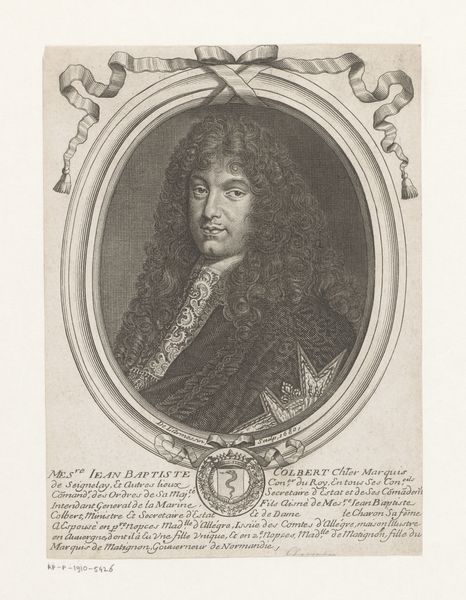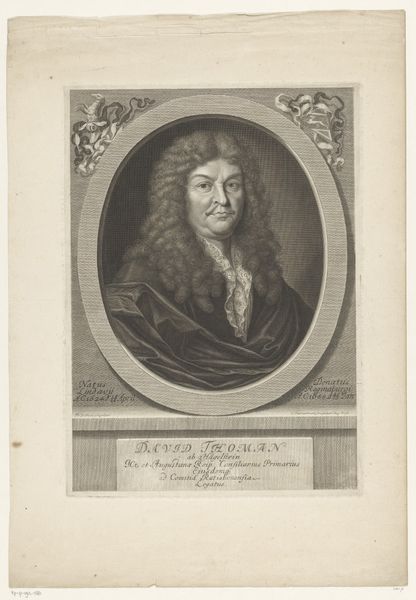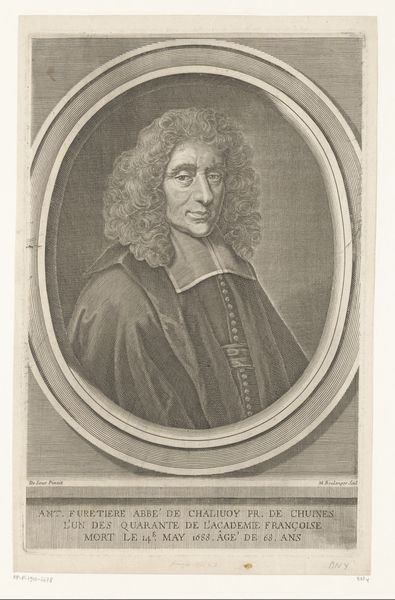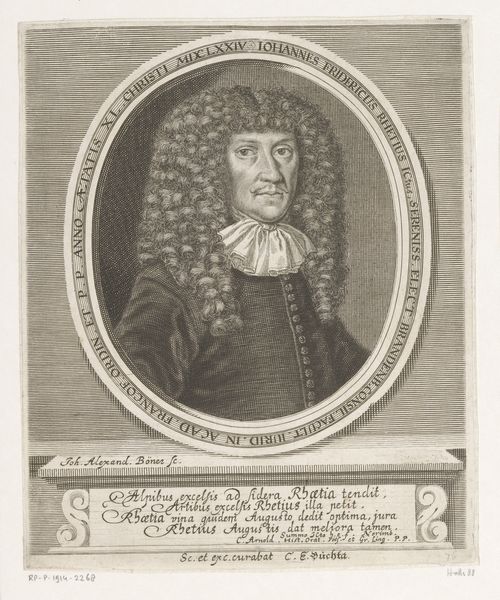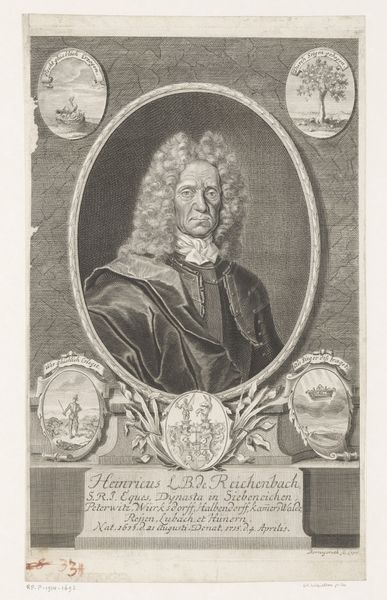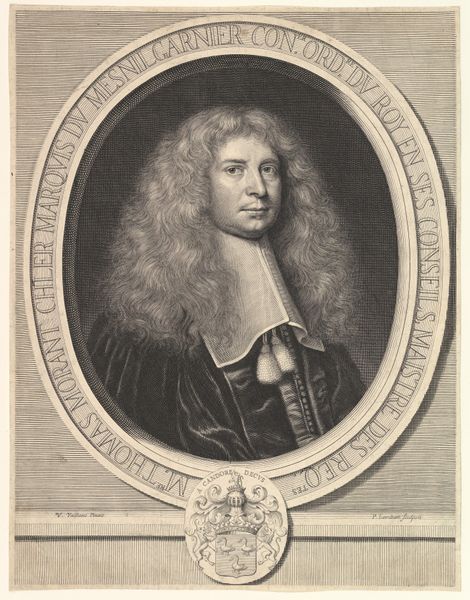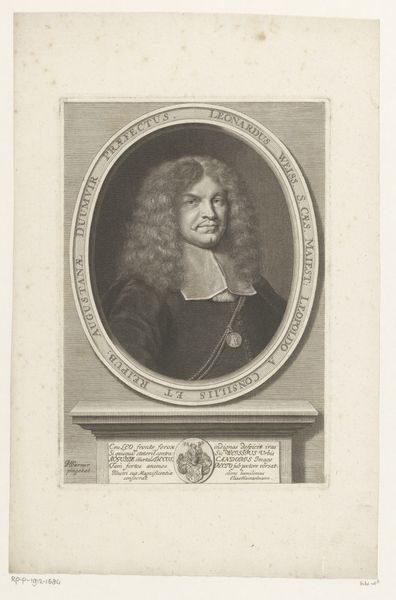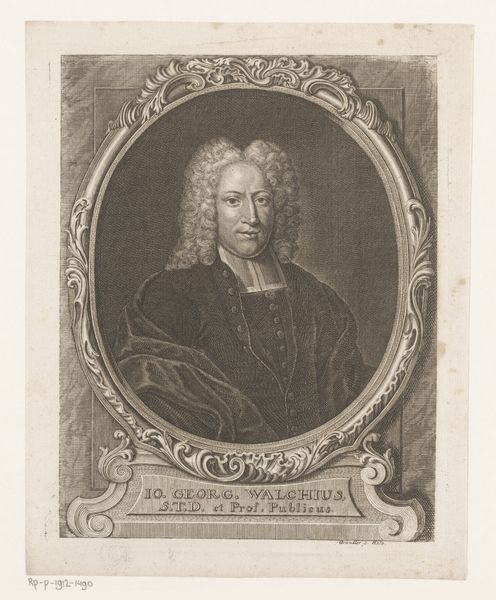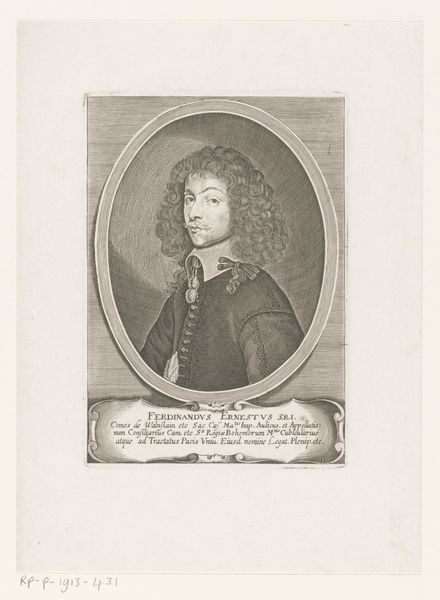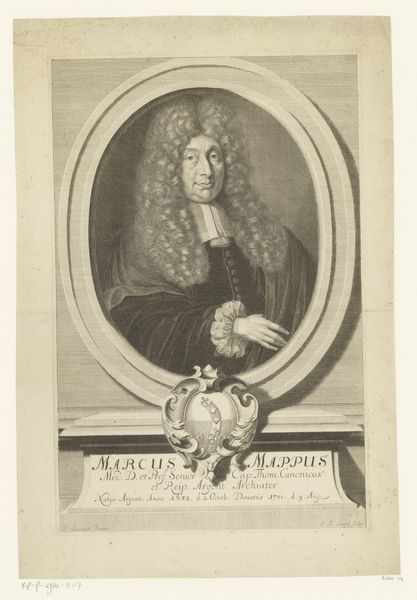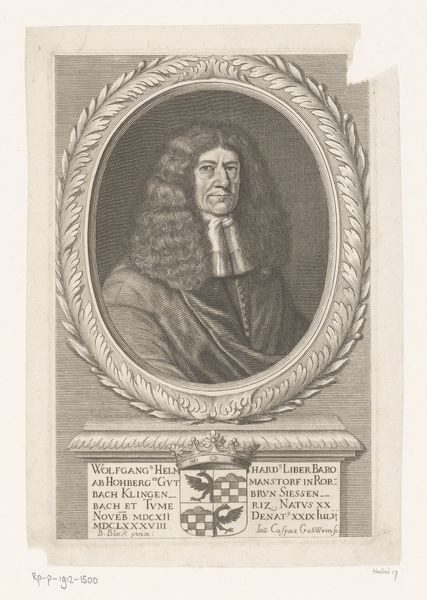
print, engraving
#
portrait
#
pencil drawn
#
baroque
# print
#
old engraving style
#
traditional style
#
line
#
history-painting
#
engraving
Dimensions: height 225 mm, width 159 mm
Copyright: Rijks Museum: Open Domain
Curator: This is a print dating back to 1662, identified as a portrait of Denis Talon. It's the work of Nicolas de Larmessin. Editor: It's captivating. The elaborate oval frame and detailed lines give it an air of formality, almost theatrical. The stark contrast pulls you right into the subject's gaze. Curator: Absolutely. The artist, Larmessin, was known for his skill in capturing the likeness and status of prominent figures. Talon himself held significant positions within the French legal system. The print would have served, in part, to broadcast his importance. Editor: Looking closely, the cascading wig, the fine details of his garment – these all contribute to an image of power, of established authority. But there’s also something quite vulnerable in his expression. Do you get that feeling, too? Curator: Perhaps, and it’s interesting you note that. Portraits in this era functioned less as candid glimpses and more as carefully constructed statements of identity. While artists had some liberty, they also catered to the desires of their patrons and existing societal expectations. The trappings of status were non-negotiable. Editor: Right. It prompts us to consider what was *not* revealed, who might have been excluded by this construction of power. Was it purely a reflection of Denis Talon or also an echo of the societal structures in place during that period? Curator: An insightful point. It forces us to look beyond the surface. Larmessin was operating within the artistic conventions and political realities of 17th-century France, and that certainly shaped his work. We need to remember that portraits such as these served a purpose in constructing historical memory and consolidating power. Editor: Examining historical artworks means looking not just at who's in the frame, but at those who framed the image and controlled its dissemination. Each deliberate artistic choice adds another layer of cultural and social meaning to unravel. It’s really about thinking critically, not just looking passively. Curator: Precisely. These visual legacies provide potent documents for analyzing our shared histories, particularly concerning representation and power. Editor: So as we reflect on this portrait of Denis Talon, it's imperative to acknowledge its historical and social roots and open a more inclusive space for critical interpretations.
Comments
No comments
Be the first to comment and join the conversation on the ultimate creative platform.

